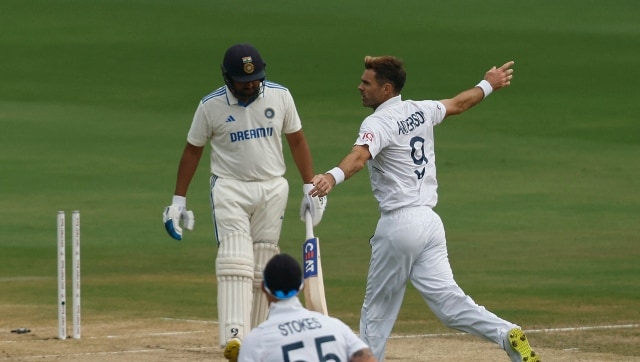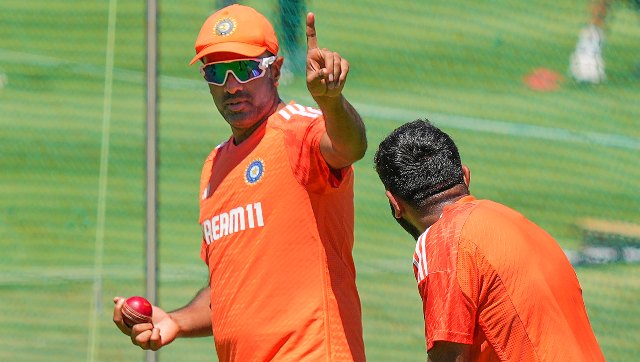India vs England: Five areas where Rohit Sharma and Co must improve to go 2-1 up in Rajkot
India vs England: Five areas where Rohit Sharma and Co must improve to go 2-1 up in Rajkot

India were dealt a rude shock in Hyderabad, where they ended up suffering a 28-run defeat despite collecting a 190-run first innings lead, but bounced back in style in Visakhapatnam a week later with a convincing 106-run victory.
Jasprit Bumrah had bowled some quality spells and was able to get six wickets in Hyderabad by making excellent use of reverse swing. The star pacer was even more destructive in Vizag, where he would end up collecting six wickets in one innings — dishing out his best performance at home — and would grab another three in the second innings to help India bowl England out for 292 after setting them an improbable 399 to win.
As for the batters, the trio of Yashasvi Jaiswal, KL Rahul and Ravindra Jadeja had scored fifties in the first Test, but none of them were able to convert those fifties into bigger scores and go past the hundred mark. In the second game, not only did Jaiswal slam a maiden double-century, going past his previous best score of 171 on debut, but Shubman Gill too bounced back to form and scored a timely century in the second innings, helping India stay ahead of the curve with Jaiswal’s 209 helping the hosts score nearly 400 after opting to bat.
Read | BCCI likely to announce squad for remaining Tests within couple of days, take call on Kohli
With more than 10 days to go for the third Test, where Rohit Sharma and Co will have the slight psychological edge even if the series is level at one-all given their morale-boosting victory in Vizag, we take a look at some of the areas where the home team can improve in order to bolster their chances of going 2-1 up:
Batting needs to click as a unit
Since the first innings in Hyderabad, the Indian batting unit hasn’t really clicked as a unit. While three members of the lineup went past fifty to help India post 436 in the series opener, the highest score in the second innings was Rohit’s 39 as the hosts crumbled under sustained pressure from Ben Stokes and Co and fell 28 runs short after being set a challenging 231 to win.
At Vizag, on the other hand, both Jaiswal and Gill scored the lion’s share of runs. Jaiswal collected 209 in an innings where the next-highest score was Shubman Gill’s 34. Gill, similarly, was the only batter to cross fifty in the second innings, collecting 104 off 147 balls with Axar Patel the next-highest scorer at 45.
The Indian batter needs to click as a unit in the upcoming fixtures, starting with the Rajkot Test, if they are to post competitive totals and boost their chances of preserving their home dominance.
Rohit and Iyer need to pick up
Rohit had a tremendous run with the bat in the ICC World Cup, but his form has been mixed ever since. The India skipper has crossed the fifty mark just one — in his unbeaten 121 in the third T20I against Afghanistan in Bengaluru. His highest in Tests since the World Cup is 39 — in the second Test against South Africa in Cape Town and in the second innings in Hyderabad.

Shreyas Iyer did collect a couple of sparkling half-centuries in the T20I series against Australia at home right after the World Cup, but the closest he’s come to scoring a red-ball fifty was in his knock of 48 for Mumbai against Andhra in the Ranji Trophy right before the England series.
Both batters will hope to bounce back to form in Rajkot. Iyer, especially, will have to work hard to retain his place in the XI. The Mumbaikar batted at Virat Kohli’s position of No 4 in the second Test, and will be in a three-way tie with KL Rahul — who missed the Vizag fixture due to injury — and Rajat Patidar for the No 5 position should Kohli be included for the remainder of the series.
Second seamer remains a worry
The India-England series was expected to be one where spinners would dominate, with the veteran duo of Ravichandran Ashwin and Ravindra Jadeja feasting on overseas batters who aren’t used to raging turners. Instead, Jasprit Bumrah’s 15 wickets across two Tests as well as quality spells from veteran pacer James Anderson have served to remind us of the importance of seam-bowling, especially making use of the reversing ball, in these conditions.
Bumrah has lived up to his match-winning billing in the last couple of games, but the second seamer — Mohammed Siraj in Hyderabad and Mukesh Kumar in Visakhapatnam — weren’t quite as effective and couldn’t really execute their role — that of lightening the burden on the lead pacer and the spin department. India did miss Mohammed Shami in the first two games, and will be hoping he regains fitness for the remainder of the series. In the meantime, either of Siraj or Mukesh will hope to put up a better show in Rajkot, whoever gets picked.
Indian spinners getting outperformed
Bumrah’s brilliance in the last two Tests has somewhat overshadowed the fact that the famed Indian spin department are getting outperformed by their English counterparts.
The fact might just sound blasphemous to many an Indian cricket fan, especially since English conditions aren’t known for supporting spin and that particular department hasn’t traditionally been the English team’s strength.
Add to that the inexperience among the England spinners; before the India-England series, Jack Leach was the only experienced frontline spinner in the English squad with 35 appearances. Leg-spinner Rehan Ahmed had played just one Test, against Pakistan in 2022, while left-arm spinner Tom Hartley and off-spinner Shoaib Bashir were yet to represent England in red-ball cricket.

And yet the English spinners managed to collect 33 wickets in the two Tests at a superior average (33.90) and economy (3.48) than their Indian counterparts, who managed just 23 (average: 38.39; economy: 4.18). Part of the reason behind that is Tom Hartley’s match-winning haul of 7/62 that spun England to victory in Hyderabad. The Surrey spinner would collect a four-fer in the subsequent Test in Vizag, where Bashir and Rehan were also among the wickets.
Additionally, the English batters appear to have trained extensively for the spinners and have largely been able to counter them successfully, especially with their sweeps and reverse sweeps and by using their feet to smother the turn on offer.
Read | How bad Indian spinners have been as compared to England spinners in first two Tests
Ashwin and Axar have bowled in both Tests, while Jadeja and Kuldeep played in Hyderabad and Vizag respectively, with the former likely to return upon regaining fitness. Come Rajkot, the trio will hope to dominate the opposition batters the way they have for some many years now.
More consistency in fielding
India were miles better in terms of fielding on the fourth — and what turned out to be final — day of the second Test. Not only did Rohit pluck a blinder at slip to dismiss Ollie Pope off Ravichandran Ashwin, but Iyer ran Ben Stokes out with a brilliant direct hit at the striker’s end to virtually end England’s hopes of pulling off a miracle late in the game.
India, however, could do with a little more consistency in this department. It wasn’t too long ago when Axar dropped a sitter to hand Pope a reprieve on 110 — the English No 3 would go on to add another 86 runs that would prove crucial in the Hyderabad Test. India have also been guilty of relieving some of the pressure on the Englishmen by conceding overthrows as well as through misfield.



 Admin
Admin 






































